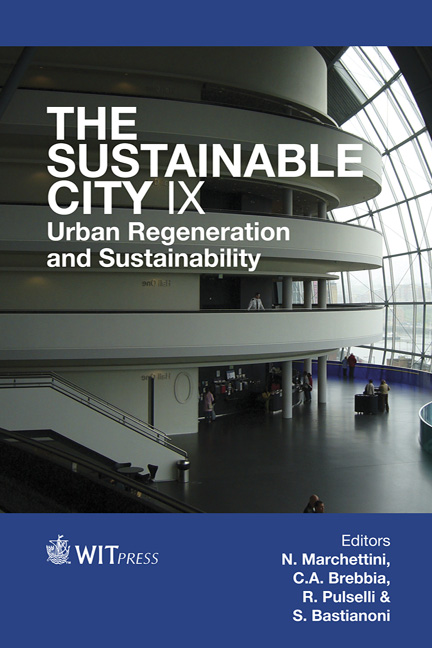The Identification And Classification Of Green Areas For Urban Planning Using Multispectral Images At Baja California, Mexico
Price
Free (open access)
Transaction
Volume
191
Pages
11
Page Range
611 - 621
Published
2014
Size
1,713 kb
Paper DOI
10.2495/SC140511
Copyright
WIT Press
Author(s)
C. Peña-Salmón, O. Leyva-Camacho, R. Rojas-Caldelas, A. Alonso-Navarrete, P. Iñiguez-Ayón
Abstract
In the legal framework of urban planning in Mexico, the provision of urban green areas is approached from a social perspective, as public spaces for recreation and sports activities, regardless of the environmental and economic benefits they can provide from a sustainable development perspective. The planning of urban green areas requires a set of conditions in order to be successful, among which are: an updated regulatory framework, adequate financial resources, technical knowledge of the appropriate plant species and the effective participation of the community. However, without a complete and classified inventory of the existing green areas, any planning is unfeasible. Therefore, this paper presents the first stage of the study of urban green areas in a city of the State of Baja California, Mexico, developing firstly, a review of the regulatory framework and a redefinition of the concept of urban green areas that takes into account the basic dimensions of sustainability, and on the other hand, it proposes a general classification of urban green areas that includes all types of open spaces with vegetation: both for public and private use, subdivided into systems and subsystems, which were the basis for the identification, classification and quantification of urban green areas, using Quickbird multispectral images of 2.6 m resolution and applying the Normalized Difference Vegetation Index (NDVI) using IDRISI software, and data were integrated in a GIS; finally, the results and discussion are presented.
Keywords
green areas typology, GIS, multispectral imaging, sustainability





